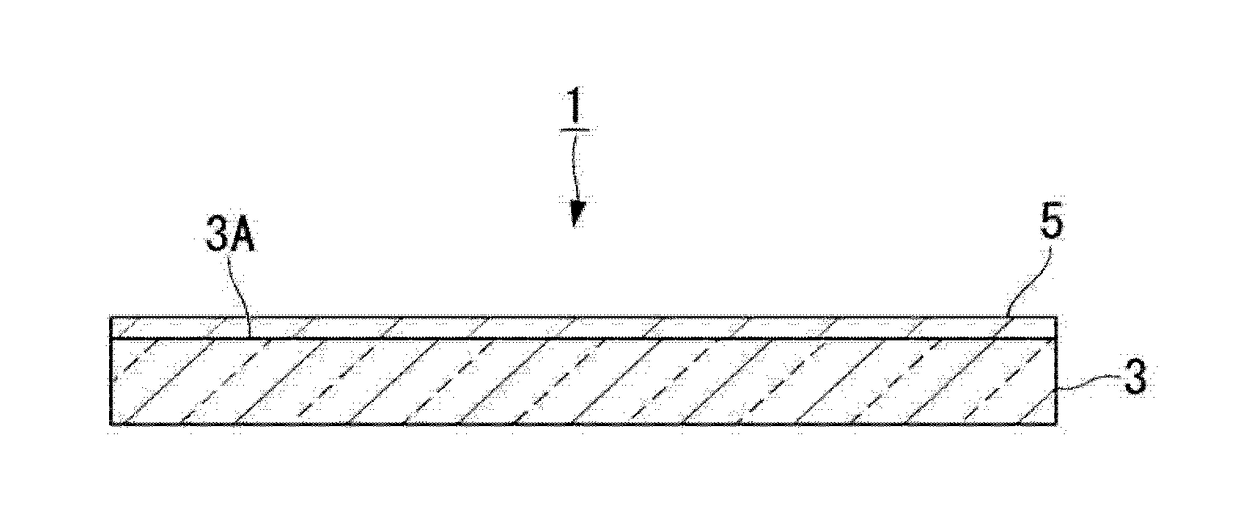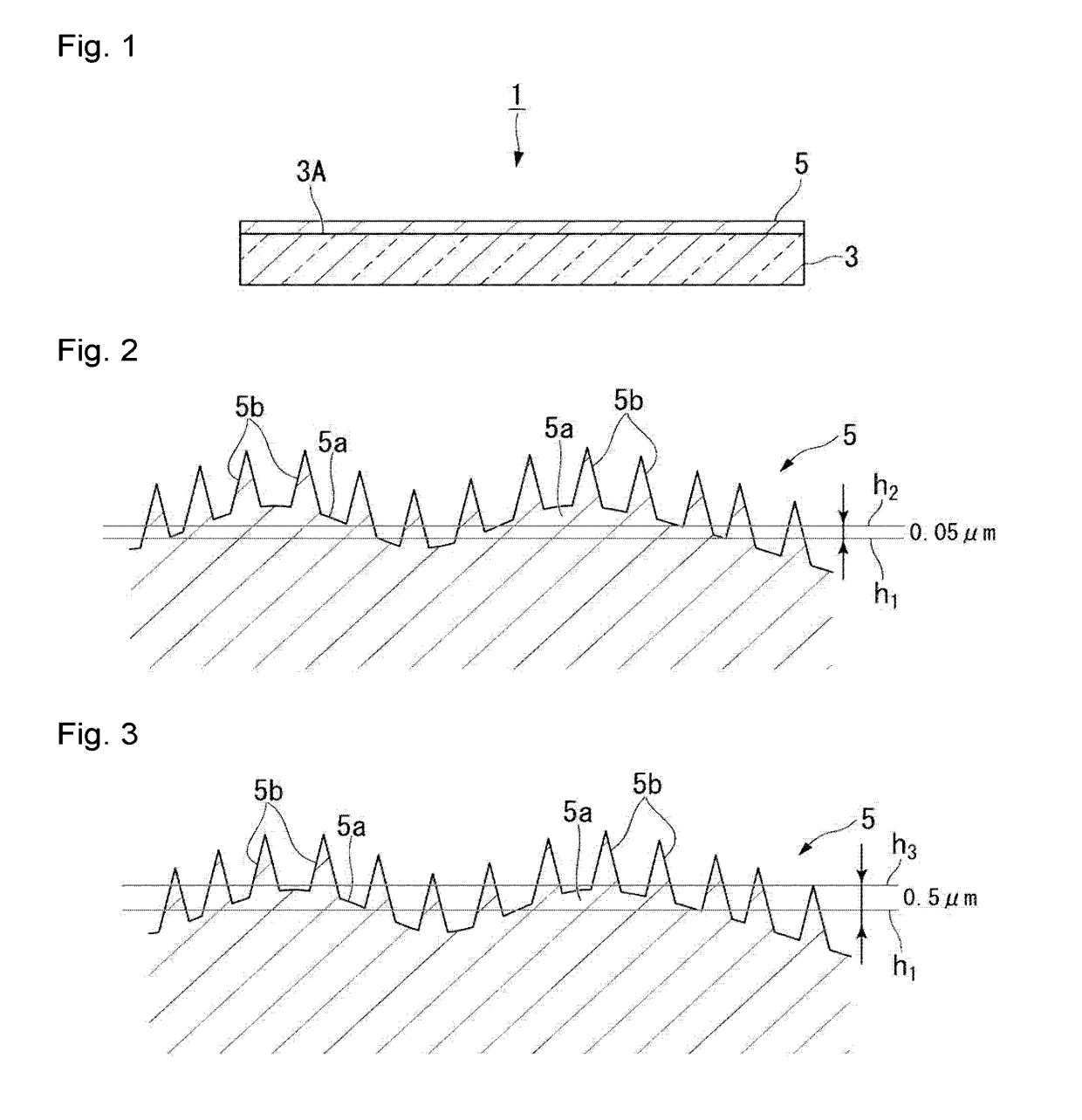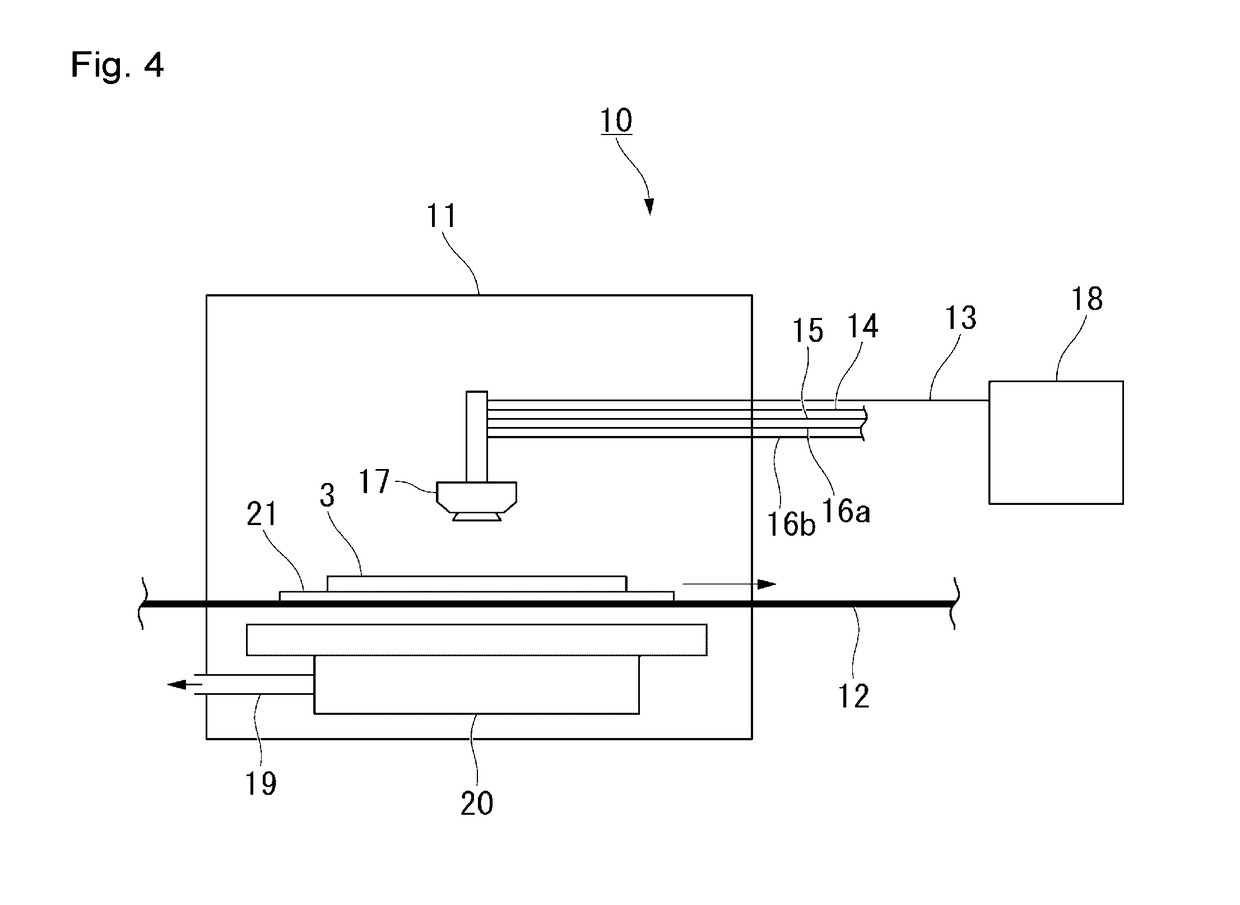Translucent structure
a transparent structure and transparent technology, applied in the field of transparent structures, can solve the problems of increased antiglare property, reduced image visibility, and high haze, and achieve the effects of reducing haze, excellent antiglare property, and sufficiently suppressing the sparkle of the invention
- Summary
- Abstract
- Description
- Claims
- Application Information
AI Technical Summary
Benefits of technology
Problems solved by technology
Method used
Image
Examples
first embodiment
[0064]FIG. 1 is a cross-sectional view schematically illustrating a first embodiment of the translucent structure of the present invention. The translucent structure 1 according to this embodiment comprises a translucent substrate 3 and an antiglare film 5 formed on a first surface 3A of the translucent substrate 3. The antiglare film 5 has a concavo-convex structure on its surface. The surface of the antiglare film 5 constitutes the surface of the translucent structure 1. Accordingly, the translucent structure 1 has the above concavo-convex structure on its surface.
(Translucent Substrate)
[0065]The translucent substrate 3 is not limited so long as it can transmit visible light and is preferably transparent. Transparency with respect to the translucent substrate 3 means that it transmits light in a wavelength region of from 400 to 1,100 nm in an amount of at least 80% on average (that is, an average transmittance of at least 80%). The average transmittance with respect to light in a ...
second embodiment
[0299]FIG. 7 is a cross-sectional view schematically illustrating a second embodiment of the translucent structure of the present invention. FIG. 8 is a cross-sectional view schematically illustrating the surface shape of the translucent structure according to the present embodiment.
[0300]A translucent structure 2 according to the present embodiment comprises a translucent substrate 4. The translucent substrate 4 has a concavo-convex structure on a first surface 4a, and the concavo-convex structure has first convex portions 4a and second convex portions 4b.
[0301]The first surface 4A of the translucent substrate 4 constitutes the surface of the translucent structure 2. Accordingly, the translucent structure 2 has the concavo-convex structure on its surface.
[0302]The translucent substrate 4 is the same as the translucent substrate 3 according to the first embodiment except that it has the concavo-convex structure on the first surface, and the preferred embodiment is also the same.
[03...
third embodiment
[0313]FIG. 9 is a cross-sectional view schematically illustrating a third embodiment of the translucent structure of the present invention. FIG. 10 is a cross-sectional view schematically illustrating the surface shape of the translucent structure according to the present embodiment. In the following description, constituents corresponding to those in the already described embodiments are represented by the same symbols and their detailed description is omitted.
[0314]A translucent structure 6 according to the present embodiment comprises a translucent substrate 3, an antiglare film 5 formed on a first surface 3A of the translucent substrate 3, and a water / oil repellent layer 7 formed on the antiglare film 5.
[0315]The water / oil repellent layer 7 has a concavo-convex structure on its surface, and the concavo-convex structure contains first convex portions 7a and second convex portions 7b.
[0316]The surface of the water / oil repellent layer 7 constitutes the surface of the translucent s...
PUM
 Login to View More
Login to View More Abstract
Description
Claims
Application Information
 Login to View More
Login to View More - R&D
- Intellectual Property
- Life Sciences
- Materials
- Tech Scout
- Unparalleled Data Quality
- Higher Quality Content
- 60% Fewer Hallucinations
Browse by: Latest US Patents, China's latest patents, Technical Efficacy Thesaurus, Application Domain, Technology Topic, Popular Technical Reports.
© 2025 PatSnap. All rights reserved.Legal|Privacy policy|Modern Slavery Act Transparency Statement|Sitemap|About US| Contact US: help@patsnap.com



